Review of the exhibition „La Traversée“ by Mathieu Pernot in the „Jeu de Paume”, Paris, March 2014.
The exhibition „La Traversée“ by Mathieu Pernot in the „Jeu de Paume“, Paris opens with a wall of photographic portraits: small and large-scale, colour and black and white. The subject of all images is a boy turning into a man over the time, offering glimpses into his life. The portraits of the Roma individual set the tone for an examination of concepts of sedentary and nomadic living life.
Entering the exhibition space, in a niche on the left hand side, a work compiled from historical identification documents, interviews and photographic portraits shows how non-conform, nomadic behavior was restricted through heavy police pressure far into the 20th century. The personal stories and artistic portraits contradict the externally prescribed identity in the signaletic cards and nomadic passes.

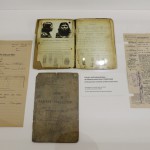

In another work, on an adjoining wall, the historical mug shots and documents are contrasted with a series of photo-machine portraits that the artist produced with the children of the Roma family he is working with since his university days. The self-portraits hint at the ongoing administrative pressure directed against the non-sedentary population.
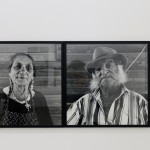

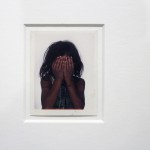
This is not restricted to the distant past as a series of large scale photographs of today’s disciplinary institutions, prison yards illustrate. A series of portraits shows family members trying to communicate with the inmates beyond the high walls. These state institutions still extend their influence in an extraordinary manner on the non-sedentary population.

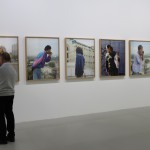
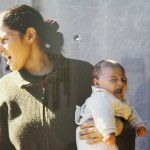
In the next part of the exhibition, this apparatus of identification and population management meets images of sedentary life in the 20th century, concrete housing structures, their de-individualising character, but also their increasing disappearance as overcome and no longer acceptable spaces for residence.
Photographs of a burning caravan and alighted faces of a group of onlookers terminate this circle of a description of society that goes way beyond the documentary realm. Mathieu Pernot is mixing and composing, comparing and opposing story threats and offers new perspectives on – and readings of – our pre-structured and often unquestioned realities of contemporary life and questionable strategies of upholding this status quo.




























